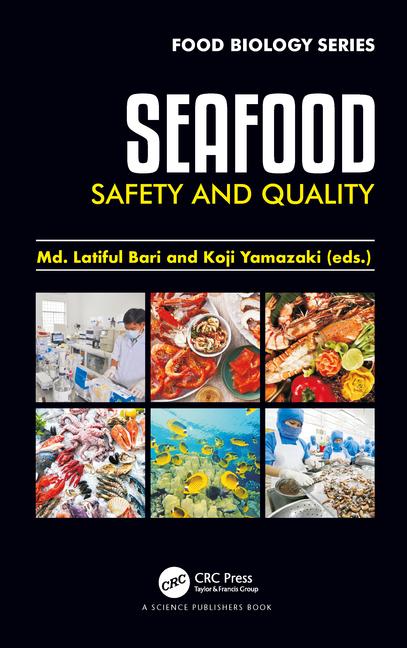Every year the CDC releases a report titled "Incidence and Trends of Infection with Pathogens Transmitted Commonly Through Food." They've just released their 2013 data and Listeria remains the deadliest bug with a 20% mortality rate. Because these illnesses are almost always related to ready-to-eat products, 'just cooking it' is a suggestion that consumer cannot do to protect themselves. The pathogen, too, has been popping up in some very unexpected places.
Several years ago, cantaloupe was a surprise carrier. An outbreak of listeriosis, first reported in late 2011, caused at least 33 deaths by the time it ran its course. In addition, a pregnant woman at the time of her illness had a miscarriage. The deaths were mostly among children and very old who consumed the product.
Eric and Ryan Jensen, the Colorado farmers who grew and processed the cantaloupes, were sentenced to five years probation and six months of in-home detention for their role in the outbreak. They were also were sentenced to 100 hours of community service and ordered to pay $150,000 in restitution in connection with the deadliest food outbreak in the United States in nearly 100 years.
During sentencing, Ryan Jensen said, "My most sincere apologies and deepest regrets. I hope the victims' meeting helped. I do know that much has been gained in food safety understanding both here and outside the country because of this."
Circumstances a few months ago showed that we still have a long way to go before we fully understand how Listeria enters our food supply. Caramel apples, a traditional winter holiday treat, were recalled due to an entirely unexpected outbreak of listeriosis. Even now, several months after the first recall was announced, the apple supplier as well as the CDC does not know how or where the contamination occurred.
The recall, first limited to caramel apples, was recently expanded to include all Gala and Granny Smith apples distributed last year by Bidart Bros. of Bakersfield, California. Apples shipped from its Shafter, California packing plant have been linked to at least 32 Listeria illnesses and 6 deaths in 11 states. The outbreak began just before Halloween and Bidart Bros. issued a recall on Dec. 22 just to customers that produce caramel apples.
Responding to a reporter's questions about the recall, Robert Tauxe, M.D., M.P.H., Deputy Director, Division of Foodborne, Waterborne and Environmental Diseases of the National Center for Emerging and Zoonotic Infectious Diseases, said "The investigation is very active, there are cultures still incubating, patients still being interviewed, and new information still being assembled. So I do not have good answers to your questions."
There is very little previous experience with Listeria in apples, according to Dr. Tauxe, so there are questions about the whole process. Compounding the issue is Listeria contamination has only been reported on caramel dipped apples, no problems with whole, loose fruit from the same supplier have been reported. The CDC is working to find an answer with cultures still incubating, patients still being interviewed, and new information still being assembled.
Dr. Tauxe doesn't know enough about the details of how caramel apples are handled." I do not know the details of how it is done," he said, stating that it is "unlikely that Listeria would grow in caramel - not enough water in it."
Other questions remain. Could the stick placed into the apple transfer Listeria to the inside? Could Listeria multiply if it were introduced into the core of an apple that way? Dr. Tauxe says those are good questions in need of additional food micro research.
Mark Offerhaus, Chief Executive Officer of Micreos, a Dutch-based company that develops phage-based products that fight dangerous bacteria like Listeria and Salmonella, says, "Those two breakouts signal a real need for a top-to-bottom review of any food process, regardless of the product. We now know without a doubt that Listeria can be found anywhere."
Offerhaus suggests adding an extra margin of safety by reviewing current protocols as well as conducting an inplant trial study using an anti-Listeria phage such as LISTEX™, a product shown in a study published by the International Journal of Food Microbiology to be able to reduceListeria monocytogeneson ready-to-eat (RTE) roast beef and cooked turkey by 2.1 log10 CFU/cm2 and 1.7 log10 CFU/cm2, respectively.
In the study conducted at the University of Guelph, Ready-To-Eat (RTE) meat cores at 4°C and 10°C were inoculated with cold-adapted L. monocytogenesto result in a surface contamination level of 103 CFU/cm2. LISTEX™ was applied at 107 PFU/cm2 and samples taken at regular time intervals during the RTE product's shelf life.
LISTEX™ was effective during incubation period at 4°C with initial reductions of L. monocytogenesof 2.1 log10 CFU/cm2 and 1.7 log10 CFU/cm2, respectively, for cooked turkey and roast beef. The presence of the Micreos phage resulted in lower L. monocytogenes numbers, relative to the untreated control, of about 2 log CFU/cm2 over a 28-day storage period at 4°C. An initial L. monocytogenescell reduction of 1.5 log10 CFU/cm2 and 1.7 log10 CFU/cm2, respectively, for cooked turkey and roast beef was achieved by the phage at 10°C (abusive temperature).
Offerhaus noted that the study showed LISTEX™ causes an important initial reduction of L. monocytogenesnumbers and can serve as an additional hurdle to enhance the safety of RTE meats, potentially creating the same additional safety margin with other foods.
"LISTEX™ is suitable for natural and organic products, does not influence the organoleptic properties of the treated products and does not require labeling," he said.
More information and a copy of the study are available from Dirk de Meester, Director of Business Development, Micreos Food Safety (d.demeester@micreos.com).





Report Abusive Comment